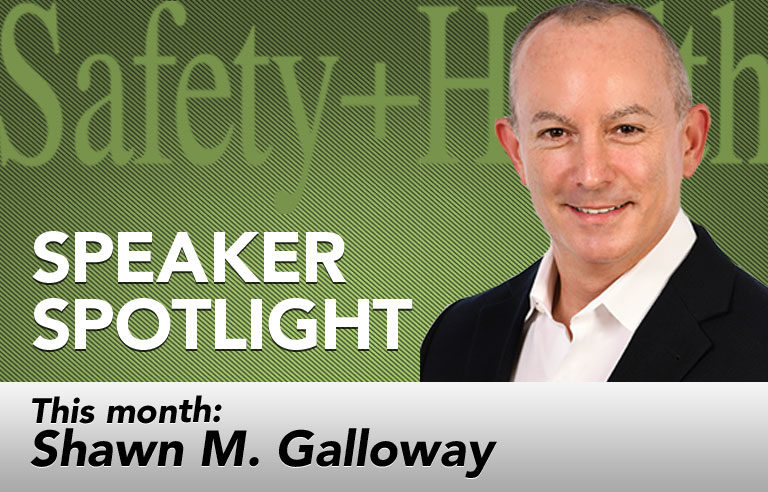Speaker Spotlight: Make time for strategy: Value creation for internal customers and consumers

EDITOR’S NOTE: Every year, the National Safety Council Congress & Expo features some of the top thought-leaders and motivators in the occupational safety and health community. Safety+Health has invited the most highly rated presenters to contribute to this monthly column. For more on this year’s event, visit congress.nsc.org.
Priorities result from decisions. “No time for strategy” is a poor decision. Are you making time for strategy? Strategy is a framework of choices, trade-offs and small bets an organization makes to determine how to capture and deliver value. Strategy is sustained value creation over time.
Is what you’re working on in safety both of value and creating the perception of value with the internal customers and consumers of your safety improvement efforts?
Strategy and internal value creation aren’t well understood. In our consulting work, we routinely see companies simply aiming programs at problems instead of developing strategy. Strategy goes well beyond problem-solving. Strategic thinking is an ongoing process, a way of being and behaving. When strategy isn’t understood, it’s ignored. Out of sight is out of mind.
Ignoring strategy leaves you rudderless. You paddle around in circles. If all your attention goes into just staying afloat, you can’t think ahead. People who need strategic thinking the most are often the very people who ignore it. They spend all their time ricocheting from one emergency to another, firefighting.
Attention needs to be reallocated to thinking ahead. When your short-term behaviors are misaligned with your long-term vision, you’re continually surprised by events. Some of these can be painful, if not outright dangerous. An effective, robust strategy is critical for sustainable success in any area of business – externally and internally. Safety is no different. How effective is your safety strategy?
After reviewing and providing feedback on countless safety strategies, ranging from enterprisewide to site-specific, we have observed 10 common problems:
- Focusing on failing less and, thus, having no clear vision of success.
- Not using data to prioritize focused efforts, which are largely opinion-driven.
- Not considering the sustainability factor of culture. Culture is why your efforts will succeed or fail.
- Having no clear road map outlining the steps along the journey or across the time horizon.
- Not planning across multiple years. There should be a minimum three- to five-year time horizon in which decisions are charted across. Taking on too much and not following through or building on is a common execution trap.
- Not aligning with the business strategy and overall trajectory. Safety strategy must support – rather than hinder – the overall trajectory of the business decisions.
- Not having a balanced scorecard with measurements that validate the efficacy of the choices and the value derived between actions and results.
- Actors not knowing their individual safety roles, responsibilities and results; thus, the strategy isn’t operationalized within line leadership, leading to safety leaders owning too much of the strategy.
- Not having a continuous marketing plan to solicit discretionary effort.
- Not regularly updating customers and consumers on the progress and current position in the plan. Everyone needs to know where they are in the journey as time passes.
What we do with our incident or injury prevention and cultural evolution efforts must be of value, with decisions driven by data. Are your efforts focused on areas that create and provide real, sustainable value? Do customers and consumers believe the safety efforts are of value? Do you have a “have-to” or a “want-to” culture?
Don’t be rudderless. Make time for strategy.
This article represents the views of the author and should not be construed as a National Safety Council endorsement.
 Shawn M. Galloway is president of ProAct Safety and co-author of several best-selling books. As a consultant, advisor, keynote speaker and icon in the industry, he has helped hundreds of organizations within every major industry improve safety strategy, culture, leadership and engagement. He is also the host of the highly acclaimed weekly podcast series, “Safety Culture Excellence.”
Shawn M. Galloway is president of ProAct Safety and co-author of several best-selling books. As a consultant, advisor, keynote speaker and icon in the industry, he has helped hundreds of organizations within every major industry improve safety strategy, culture, leadership and engagement. He is also the host of the highly acclaimed weekly podcast series, “Safety Culture Excellence.”
Direct to your inbox: Sign up to be notified in email about new “Speaker Spotlight” columns.
Post a comment to this article
Safety+Health welcomes comments that promote respectful dialogue. Please stay on topic. Comments that contain personal attacks, profanity or abusive language – or those aggressively promoting products or services – will be removed. We reserve the right to determine which comments violate our comment policy. (Anonymous comments are welcome; merely skip the “name” field in the comment box. An email address is required but will not be included with your comment.)

